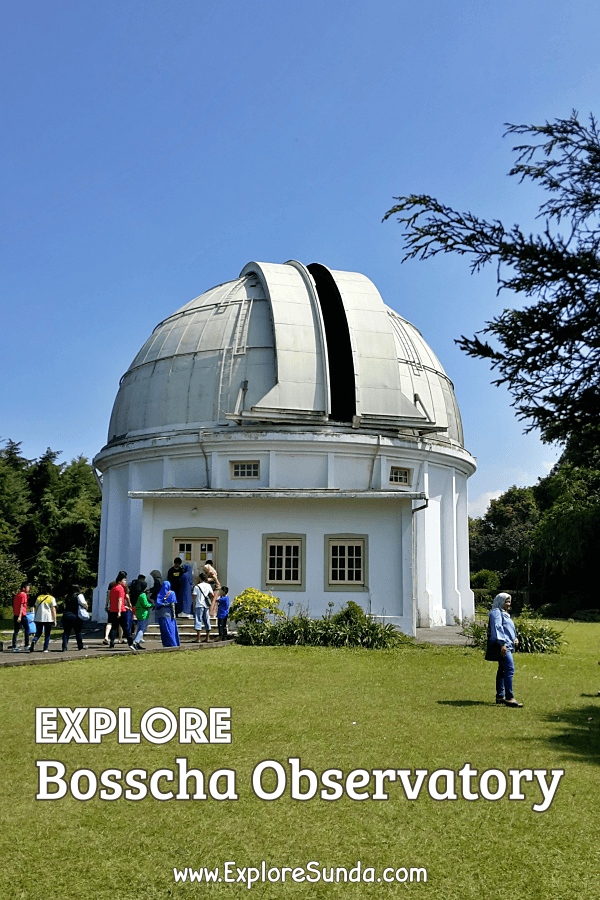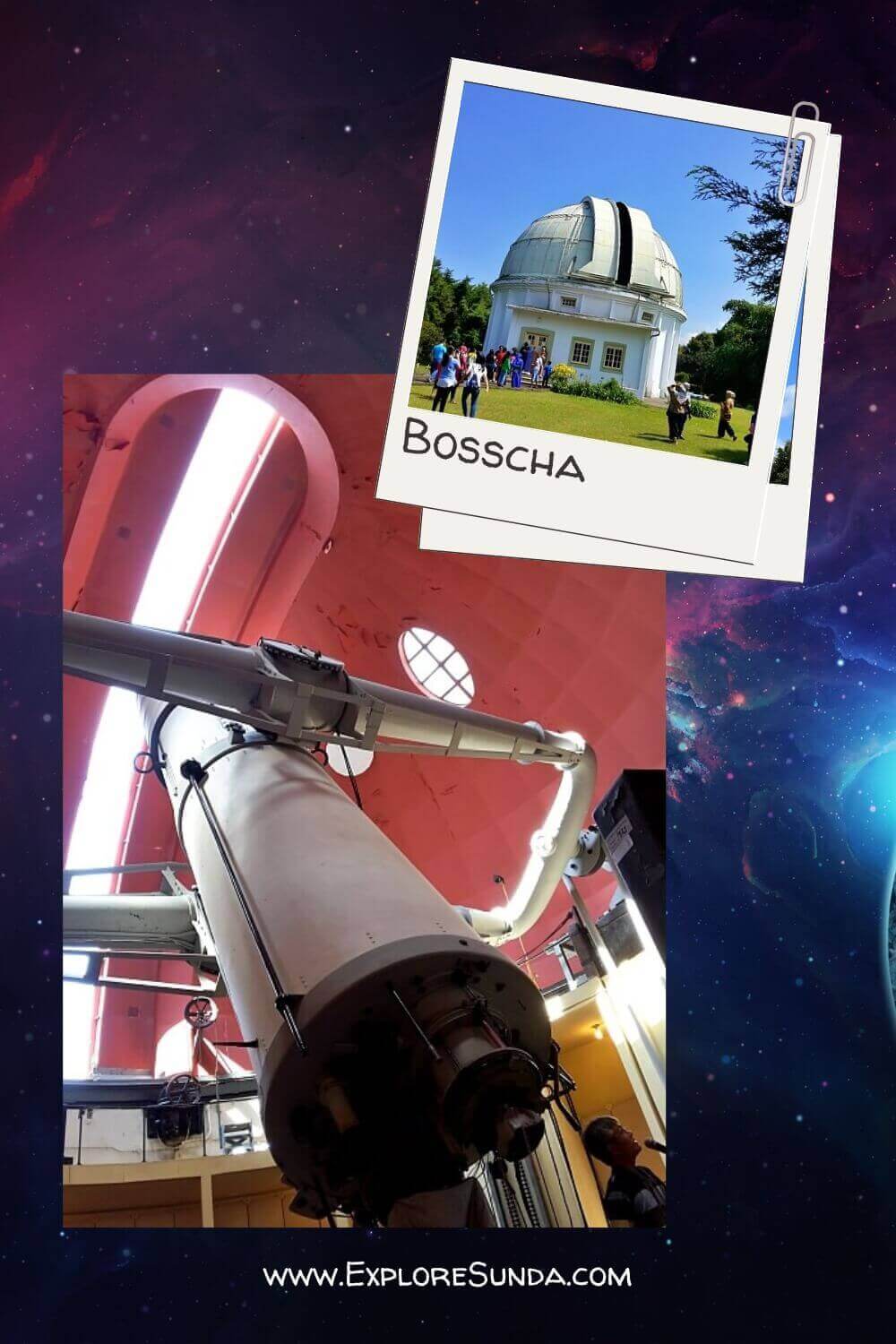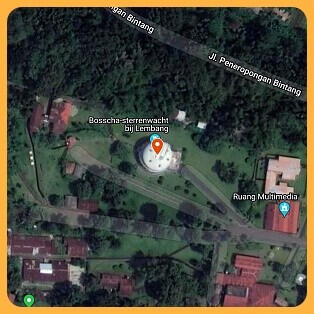Bosscha Observatory
Bosscha is an astronomical observatory complex in Lembang, Bandung. It is the one and only in Indonesia until the new one is completed in Kupang, East Nusa Tenggara. Although the main objective of this observatory is scientific research, once a week, it opens its door to the public. So, don't miss an opportunity to explore this great observatory!
Due to the Covid-19 pandemic, Bosscha Observatory is temporarily closed to the public. Hopefully, soon it will resume its enlightening tours. This article is based on our pre-Covid-19 visit.
Guided Tour in Bosscha Observatory
Bosscha used to be open to the public every Saturday and closed during the fasting month of Ramadan. Plus, they offered several night tours to observe the night sky between April and October. However, this night tour heavily depended on the weather because it could only be done during a clear night.
Four guided tours were offered on Saturday mornings, each lasting about an hour. Each of these tours accommodated ninety visitors, which divided into two groups. These groups took turns watching a video in the multimedia room and observing inside the observatory.
The multimedia room is okay-ish for introducing the Bosscha complex, providing information on the research done here, and comparing how small earth is compared with other planets and stars in the galaxy. Since they play a video, this room is turned into a cinema. Hence, the dimmed light and closed doors. Unfortunately, the ventilation of this old room is not sufficient, which resulted in a musty odor.
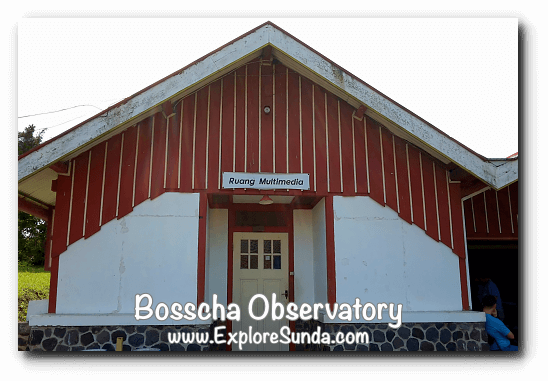 Multimedia room to watch movies in Bosscha Observatory.
Multimedia room to watch movies in Bosscha Observatory.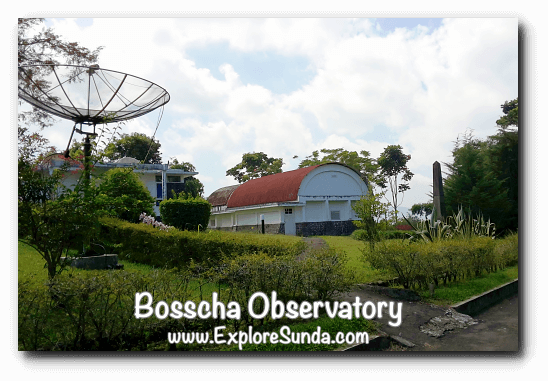 Bosscha Observatory complex.
Bosscha Observatory complex.On the other hand, entering the observatory is one of a kind experience. Bosscha complex was stated as Heritage Object in 2004 and a National Vital Object in 2008. Thus, each building must be preserved as is and guarded by air force personnel.
The observatory is called Kupel, from the Dutch word 'koepel' since the shape of its roof is a dome, and the wall looks like a cylinder. It was initiated by K.A.R. Bosscha, a prominent Preanger planter in his time. He collaborated with Nederlandsch-Indische Sterrenkundige Vereeniging (East Indies Astronomical Society). The construction was started in 1923 and finally completed in 1928. It was built with the Lembang fault in mind, which means it can survive any earthquake with a magnitude up to 7SR. The roof was made of steel, and it could rotate 360 degrees. Although the roof must be opened manually, its rotation is handled by a motor from Siemens, a prominent German manufacturer. They control this roof rotation through remote control. Unlike the sleek remote control we are used to today, this antique remote control is attached to a thick cable.
There are five large telescopes in Bosscha, but the most popular is the Zeiss double refractor made by Carl Zeiss, another prominent German manufacturer. It has two objective lenses with a diameter of 60 centimeters each and a focal length of 1080 centimeters, weighing approximately 17 tons. As you can imagine, this telescope occupies most of the space in the observatory. Since it is an old telescope, the scientist must manually push or pull it to adjust its angle.
Another amazing thing in this observatory is the platform where the scientist work. The platform works like a giant elevator that can be raised up to the height of the wall right below the dome. Hence, the scientist can choose how s/he wants to observe the space, whether to stand or lay back on the reclining seat.
It seems they are all okay-ish by today's standards. But imagine these telescopes, machines, and buildings were all built and installed in 1923, which means they are one hundred years old! And they are still working smoothly.
One imperative precaution: everybody must be cautious while observing Bosscha. It is not a playground. For example, when the platform is raised, it leaves a dark room underneath, where children can easily fall. Another example is the old electricity panel attached to the wall with a power of thirty thousand volts. So, always keep your hands to yourselves and watch over your children.
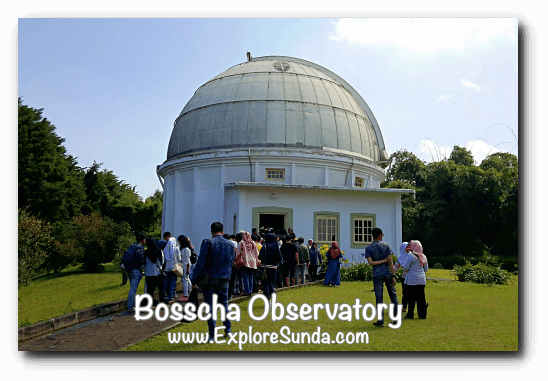 Visitors are crowding the entrance in order to be the first to enter Bosscha Observatory.
Visitors are crowding the entrance in order to be the first to enter Bosscha Observatory.It is ashamed that this magical experience is tainted by the visitors. Every time the door is opened, visitors crowd the door, and each wants to be the first to enter and get the best spot. I hope the visitors are more disciplined or perhaps the organizer can instill some more organized queueing system.
The Bosscha complex occupies almost eight hectares of land. Over the years, more buildings were added, and the surrounding villages were getting crowded. It resulted in light pollution, which is not a suitable environment for any observatory. That's why the new observatory is built in East Nusa Tenggara, where the sky is much less polluted. Thus, someday Bosscha might not have functioned as an observatory anymore.
Exploring Bosscha is not only about the observatory because the landscape is equally breathtaking. Explore the vast garden and take as many pictures as you like :) Lastly, don't forget to check out the souvenir shop, selling many miniatures of the observatory, keychains, and various t-shirts. They are all uniquely Bosscha :)
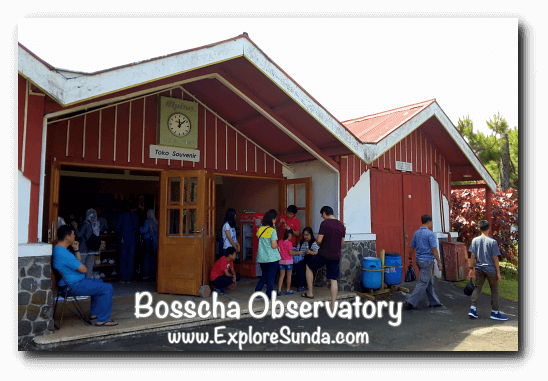 The souvenir shop at Bosscha Observatory.
The souvenir shop at Bosscha Observatory.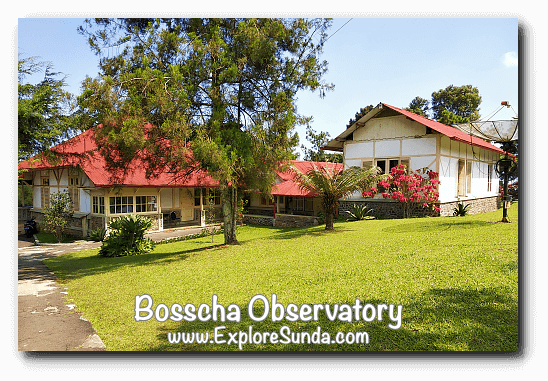 Bosscha Observatory complex in Lembang, Bandung.
Bosscha Observatory complex in Lembang, Bandung.Directions to Bosscha Astronomical Observatory
Bosscha is located between Bandung and Lembang. If you go from Bandung, Bosscha is a bit further up from Farm House, and the gate is on the right side of the road. Bosscha observatory is approximately one kilometer uphill. The address is Jalan Peneropongan Bintang no. 45, Lembang. Only small cars can drive through the gate and park near the observatory. Buses must park before the gate, and the passengers walk or hire ojek to reach the observatory. The GPS coordinates are 6°49'28.2"S 107°36'57.1"E (-6.824500, 107.615861).
Recent Articles
-
Roro Jonggrang: A Tale Etched in the Stones of Prambanan Temple
Nov 05, 25 11:52 PM
Unravel the ancient Javanese legend of Roro Jonggrang that bridges myth, devotion, and the grandeur of Prambanan. -
Discover the Vibrant Celebration of Imlek in Indonesia!
Jan 13, 25 03:24 AM
The Chinese New Year of 2576 will be celebrated on January 29, 2025. Discover the special things in this Imlek festival! -
The Site Map of ExploreSunda.com
Nov 26, 24 10:40 PM
A thorough site map to help you browse through the Explore Sunda site.
